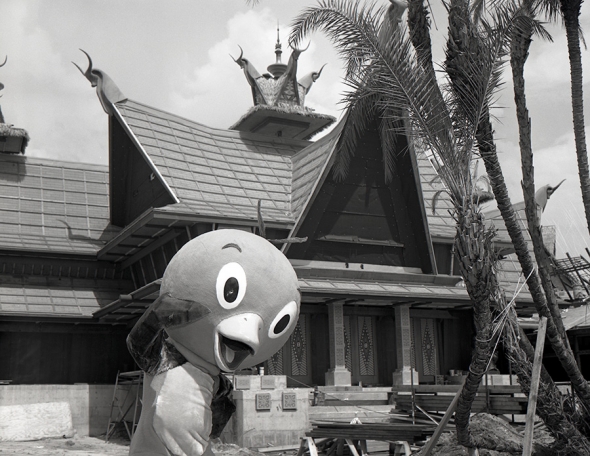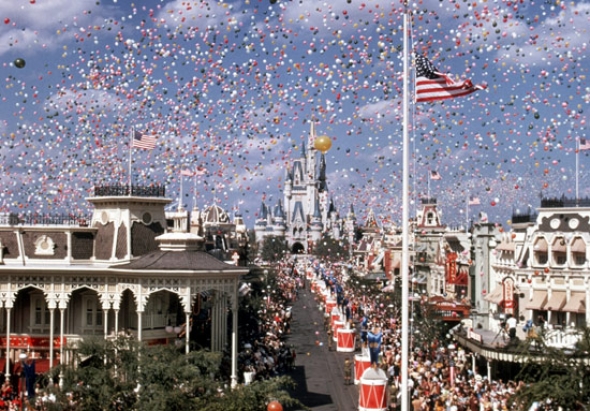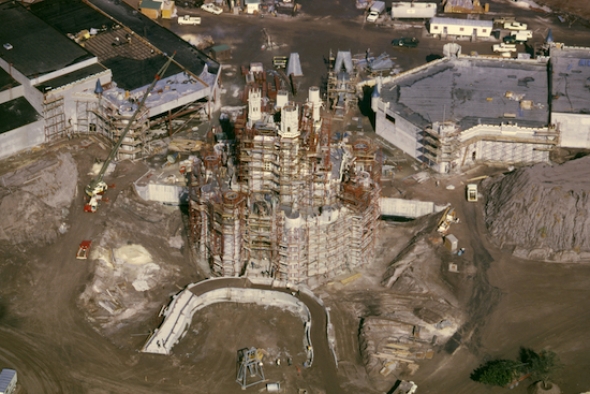
Walt Disney died of lung cancer on December 15, 1966. I’m sorry to lead with such a downer, but he did. His untimely passing cast his grand plan for the Florida Project into chaos. Even as Imagineers mourned the loss of their beloved visionary boss, they strategized the best ways to honor his memory.
The goal was to bring his E.P.C.O.T. blueprints to life. Many considered that hope idealistic but unrealistic. A brutal headline in the wake of Uncle Walt’s passing summarized the conventional wisdom regarding the Florida Project. “Epcot died ten minutes after Walt’s body cooled.” Clearly, cynics saw little hope of the prototype community of tomorrow becoming a reality.
Undeterred, Walt’s older brother, Roy, put off his plans for retirement to take control of the project. Even though he didn’t quite understand it, he knew that the younger Disney’s concept for E.P.C.O.T. would stand as the culmination of his life’s work. The onus was on Roy to bring Walt’s plans to fruition. Otherwise, critics would discredit the creator of Mickey Mouse as losing touch with reality in his final days. No one involved with The Walt Disney Company could stomach the idea of such post-death rewriting of Uncle Walt’s legacy.
A glaring, seemingly impossible problem presented itself, though. For all his talents as a leader and motivator, Uncle Walt never communicated his plans for E.P.C.O.T. eloquently enough that his employees understand the specific details. They knew that he wanted a residential area capable of permanently sustaining thousands of citizens, yet nobody knew how the schools would work. Would there be full-time students? Would visiting corporate executives living there for a short term have the same rights as permanent residents? Would their children get to attend the Disney schools during this period? And who would handle waste management in this city of carefully selected overachievers?
Image: Disney
Building a utopia is already virtually impossible. The death of the man with the plan somehow made it that much trickier. Think about the situation in more modern terms. What would Apple engineers have done if Steve Jobs had died a couple of months after coming up with the idea of the iPhone? Would we still be carrying around iPods and texting on Blackberrys? Ideas that carry this sort of intellectual resonance need their inventors to bring dreams to life, and Walt Disney’s desire for a communal paradise was among the most ambitious ever. Had he not died, our entire perspective of Orlando, Florida, might be different. But he did, and his beloved Imagineers had to carry on in his stead.
How do a group of dedicated people pick up the pieces of a shattered dream? If they’re Disney Imagineers, they take the kernels of thoughts that weren’t their own and repurpose the concepts into the most popular family vacation destination in the world. This is the story of how a group of friends honored the memory of their mentor by building his dream facility, even if it wasn’t quite what he intended.
The new republic
Image: Disney
The Walt Disney World that you know shares only one true similarity with what Disney himself envisioned in the mid-60s. If you look at the original blueprints for his Project X, Magic Kingdom and Epcot reside in a similar position to where the plans indicated they would go. Presumably, this is because Imagineers were stubborn. Even though they had to accept that most of his ideas were impossible in the wake of his death, the one thing they wouldn’t do is alter the location of the first two gates at Walt Disney World. Everything else…wound up depressingly different.
When Disney died in 1966, the protégés he’d trained had a hard pill to swallow. His brother Roy Disney pointedly informed them that the dream was over. The Utopian community Uncle Walt envisioned for his recently acquired swampland would never exist.
The worst part is that there was so much joy within the company prior to his cancer diagnosis. In the years before this tragic turn of events, The Walt Disney Company enjoyed historic levels of optimism. While still celebrating their stunning triumphs at the 1964 New York World’s Fair, the company founder and his most trusted advisors assembled frequently in the Florida War Room, discussing the future they would build. They conversed about the philosophical and practical issues of constructing a new community.
With Walt Disney gone, his team determined that no matter how impossible the odds might seem, they’d somehow find a way not just to build an entire theme park worthy of their lost leader but also repurpose many of his ideas into this new venture.
Originally, Epcot was to include the other parts such as a business center and a theme park. After the company founder’s death, however, his beloved Imagineers embarked on a quest to build a small world worthy of the Walt Disney name. Its current status as the unquestioned champion of the theme park industry exemplifies their success. Here are some of the ways they built such a titanic theme park while still honoring Disney’s original plans for Epcot.
Reinventing the wheel
Image: Disney
One of the seminal aspects of the Experimental Prototype Community of Tomorrow was that the entire city would feature a hub design. This wheel shape would feed all traffic from the outskirts of town to the center, thereby preventing a glut of people from overwhelming the cultural and business centers. The underlying premise was that the hub would act as the core that connected everything else.
Walt Disney was a world traveler who tried to learn new ideas everywhere he went. One of his favorites came from Pierre Charles L’Enfant, an architect born in France who later became an American citizen. L’Enfant received one of the greatest honors ever provided to an 18th century architect. President George Washington personally asked him to design the structure for Federal City, which eventually became known as Washington, D.C. The L’Enfant Plan ensured that every part of the city end at the governmental facilities.
Disney co-opted the plan in building the Happiest Place on Earth in 1955. His blueprints for Disneyland guaranteed that Sleeping Beauty Castle would act as the centerpiece. The surrounding territories such as Fantasyland and Tomorrowland stood as the spokes that connected to Sleeping Beauty Castle, the hub of the wheel.
The E.P.C.O.T. Walt Disney had in mind was intended to share this premise. The commercial part of the utopia would stand as the community center. The town managers would route all transportation to the middle. Everything else would exist in different parts of Epcot, but the “spokes” would easily transfer people from places such as the theme park and underground driving regions to the center hub. As much as anything suggested during the E.P.C.O.T. announcement, the logistics of the city of tomorrow were fully formed as an idea. The prototype community would mesh commerce and residency while simultaneously embracing all the cultures of the world.




Comments
I remember reading, sometime around 1973, in Time or Life or one of those magazines, an article examining the EPCOT that was built versus the one Walt had imagined. One executive summed it up this way: "Maybe Walt could have done it. Built a fully operating city/community of the future. But try as we might, we couldn't ... if it COULD have been done, only Walt could have done it."
This is the best, informative, and interesting article I have seen in months. I am a huge Disneyana reader. Thank you! My next trip is in 2 weeks and this reminded me of my appreciation for all things"Walt".